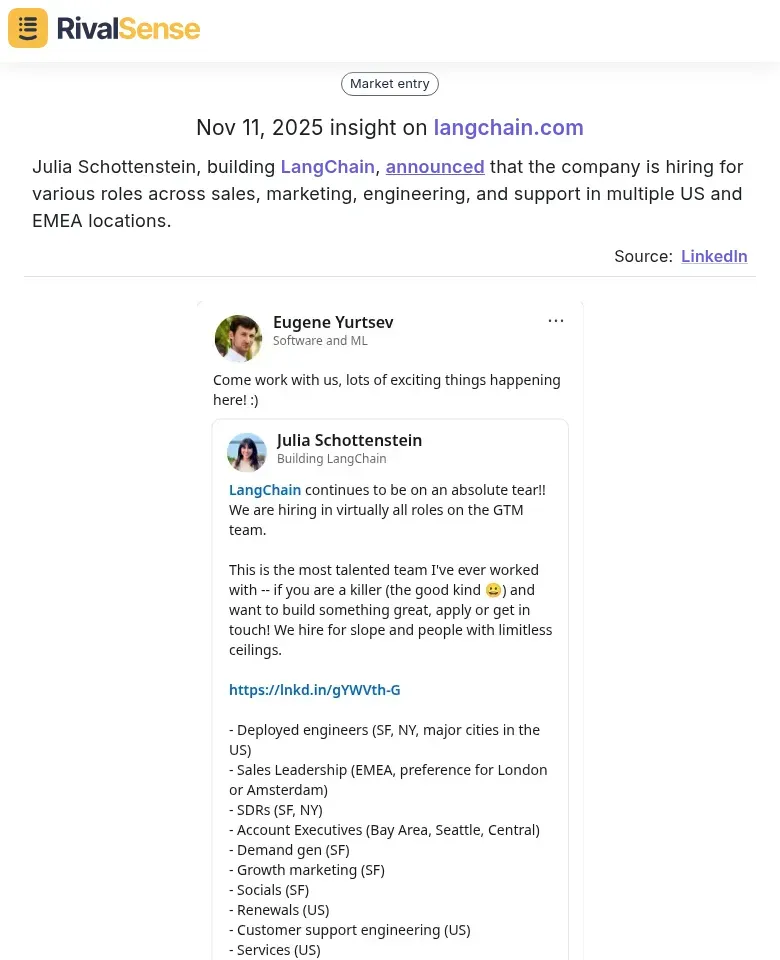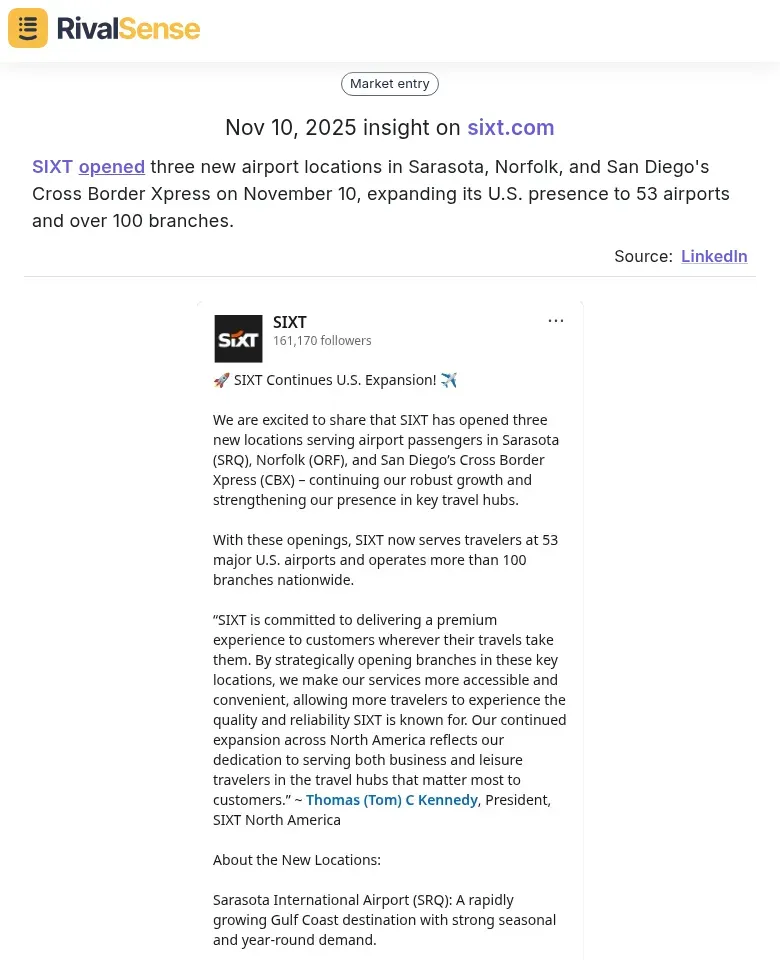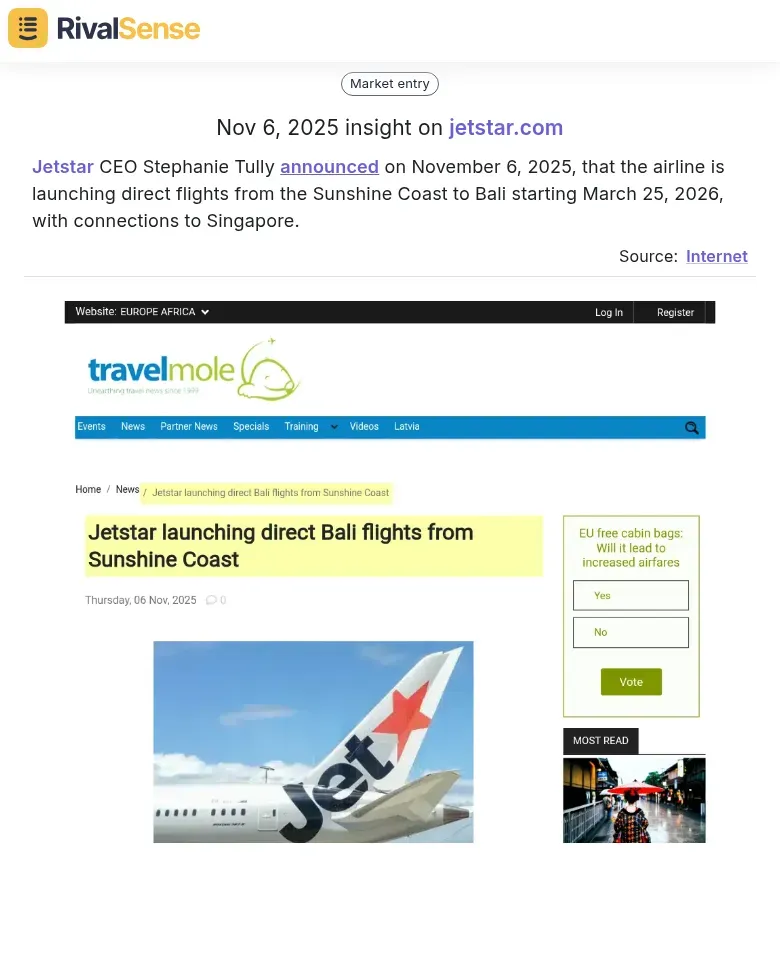Market Entry Trends: Competitor Regulatory Filing Insights 2025
Regulatory filings are a goldmine for competitor intelligence, revealing expansion plans and hiring trends before public announcements. By analyzing SEC filings, business registrations, and patent applications, you can detect competitors entering new markets or scaling operations months in advance. For example, a surge in trademark filings in a specific region often signals geographic expansion, while increased hiring in regulatory compliance roles may indicate entry into heavily regulated industries like fintech or healthcare. Tracking these filings enables proactive market entry planning—allowing you to adjust your strategy, secure partnerships, or accelerate product launches to counter competitive threats.
Practical steps include:
- ✅ Monitor filings quarterly using tools like RivalSense
- ✅ Cross-reference hiring data with job postings to validate trends
- ✅ Set alerts for key competitors in target regions
In 2024, a tech firm used patent filings to anticipate a rival's AI product launch, pivoting their roadmap to maintain market share. By leveraging these insights, you transform reactive monitoring into strategic foresight.
Hiring Patterns as a Leading Indicator of Market Expansion
Hiring patterns offer a powerful window into competitor market expansion strategies. By analyzing job postings, you can predict geographic moves and functional growth before they become public. For instance, when competitors post multiple sales roles in a new region, they're likely preparing for market entry within 3-6 months. Similarly, engineering hires for localization or compliance signal product adaptation for new markets.
Real-World Insight: Julia Schottenstein, building LangChain, announced that the company is hiring for various roles across sales, marketing, engineering, and support in multiple US and EMEA locations. 
This type of hiring insight is valuable because it reveals early-stage expansion efforts, allowing you to anticipate market entry and adjust your talent acquisition or competitive positioning strategies accordingly.
Connect hiring data to market entry phases: early-stage expansion shows heavy marketing and sales recruitment, while mature entry focuses on customer support and local leadership. Track resource allocation by monitoring ratios between departments—a surge in sales roles versus engineering indicates a push for rapid market capture.
Practical steps:
- ✅ Set up alerts for competitor job postings in target regions
- ✅ Analyze job descriptions for required skills (e.g., language, regulatory knowledge)
- ✅ Monitor hiring velocity—rapid scaling suggests aggressive timelines
- ✅ Compare hiring patterns across competitors to identify industry trends
- ✅ Use this intelligence to anticipate competitive moves and adjust your own strategy
Geographic Expansion Insights from Location-Based Filings
Geographic expansion insights from location-based filings reveal competitor market entry strategies through airport, branch, or facility openings. These filings can include permits for new facilities, which often precede public announcements by months. For example, a tech firm filing for a new data center in Singapore signals APAC expansion, while a retail chain's airport store application indicates targeting high-traffic travel hubs.
Real-World Insight: SIXT opened three new airport locations in Sarasota, Norfolk, and San Diego's Cross Border Xpress on November 10, expanding its U.S. presence to 53 airports and over 100 branches. 
This type of location-based insight is valuable because it provides concrete evidence of physical expansion, helping you identify competitor footprint growth and spot underserved markets for strategic opportunities.
Track these filings to assess competitor footprint growth—like a 20% increase in European branches suggesting a regional push—and identify strategy shifts, such as moving from urban to suburban areas. Leverage location data to spot underserved markets; if competitors avoid a region with strong demand, it's a prime opportunity.
Practical steps:
- ✅ Monitor regulatory databases for new facility permits weekly
- ✅ Map competitor locations against population density and GDP data
- ✅ Use tools like RivalSense to automate tracking and alert on filings
- ✅ Focus on filings in emerging economies for early-mover advantages
- ✅ Cross-reference with local news for context
Service and Route Launches: Timing and Market Readiness
Monitoring competitor regulatory filings for new service and route launches provides critical insights into market entry timing and readiness. This data helps you understand their market-savvy timing and align your own plans to avoid being caught off guard. For example, if a competitor files for a new air route six months ahead, it signals their entry timeline, allowing you to adjust your strategy.
Real-World Insight: Jetstar CEO Stephanie Tully announced on November 6, 2025, that the airline is launching direct flights from the Sunshine Coast to Bali starting March 25, 2026, with connections to Singapore. 
This type of service launch insight is valuable because it uncovers competitor expansion into new routes or services, enabling you to benchmark your preparedness and capitalize on market gaps or seasonal trends.
Evaluate how these launches align with seasonal or demand trends—such as airlines adding tropical routes before peak winter travel—to understand their market-savvy timing. Use this data to benchmark your own preparedness: if competitors are launching during high-demand periods, ensure your resources, like staffing or inventory, are aligned.
Practical steps:
- ✅ Set up alerts for regulatory databases (e.g., aviation authorities)
- ✅ Analyze historical launch patterns for seasonality
- ✅ Create a readiness checklist:
- [ ] Assess staffing and inventory levels
- [ ] Review marketing campaigns
- [ ] Align with peak demand periods
- ✅ Use insights to refine launch timelines and resource allocation
Integrating Insights into Competitive Intelligence Frameworks
Building a systematic approach to regulatory filing tracking starts with a centralized dashboard that aggregates data from various sources. A centralized dashboard ensures that all relevant data is accessible and actionable, enabling real-time monitoring and strategic decision-making. Set up automated alerts for key competitors to monitor changes in real-time.
Combine this with hiring data (e.g., new roles in compliance or R&D) and location expansions to spot trends—like a rival filing permits in a new region, signaling market entry. For example, if a competitor files for a trademark in Europe while hiring sales staff there, it's a clear expansion cue. Use these insights to refine your business strategy: adjust product launches, allocate resources to counter threats, or identify partnership opportunities.
Checklist for Integration:
- ✅ Identify key regulatory sources per industry (e.g., SEC, patent offices)
- ✅ Integrate data into a competitive intelligence tool like RivalSense
- ✅ Cross-reference with hiring and location data
- ✅ Schedule regular reviews (e.g., monthly) for strategy updates
- ✅ Foster cross-functional collaboration between teams
This holistic profile helps anticipate moves and stay agile in dynamic markets, transforming raw data into actionable intelligence.
Conclusion: Actionable Steps for Leveraging Filing Trends in 2025
As we wrap up our analysis of 2025's market entry trends through regulatory filings, here are actionable steps for founders and CEOs to embed these insights into strategic decision-making. By making regulatory filing analysis a core part of your competitive intelligence framework, you can transform reactive strategies into proactive market leadership.
Key Takeaways:
- 🔍 Use filing data to anticipate competitor expansions, product launches, and geographic moves 6-12 months in advance.
- 📊 Integrate filing alerts into your competitive intelligence dashboard for real-time insights.
- 🔄 Cross-reference filings with market signals (e.g., hiring trends, patent applications) to validate strategic shifts.
Future Outlook:
Regulatory filing trends will increasingly leverage AI and machine learning for predictive analytics. Tools like RivalSense will evolve to offer automated risk assessments and scenario modeling, helping you stay ahead of regulatory changes and competitor maneuvers.
Recommendations for Continuous Monitoring:
- ✅ Set up automated alerts for key competitors' filings in target markets.
- ✅ Conduct quarterly reviews of filing patterns to identify emerging trends.
- ✅ Develop agile response playbooks for common scenarios (e.g., competitor entering your core market).
- ✅ Foster cross-functional collaboration between legal, strategy, and marketing teams to act swiftly on insights.
Ready to put these insights into action? Try RivalSense for free at https://rivalsense.co/ and get your first competitor report today to stay ahead of the competition!
📚 Read more
👉 Decoding Competitor Moves: Schneider Electric's EV Charge Show Strategy
👉 How to Benchmark Against Competitors: A Practical Guide for B2B Leaders
👉 Avoid These Key Account Management Mistakes in Clinical Research
👉 How Competitors Countered Lightdash's Strategic Partnership
👉 Facebook Competitor Insights Framework: Templates for Key Account Tracking
